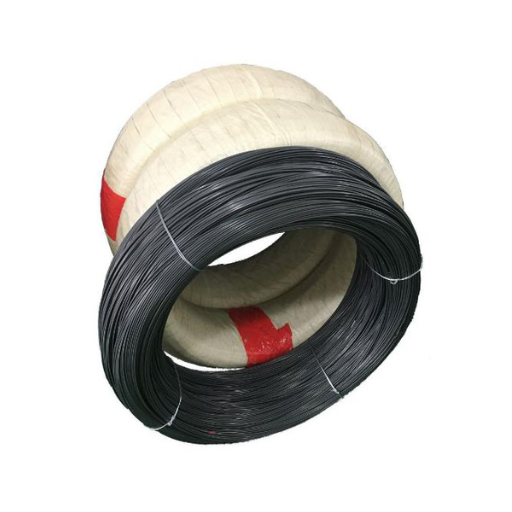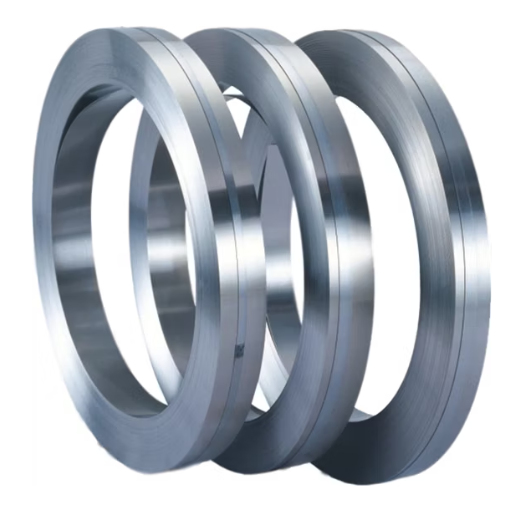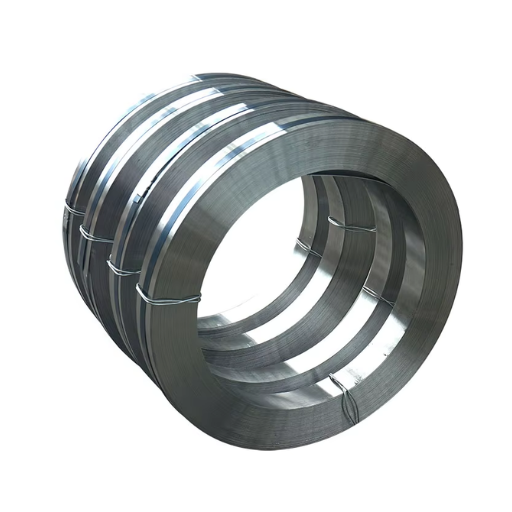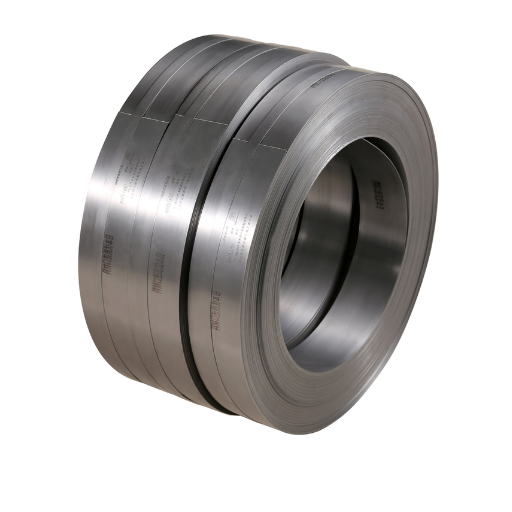Because of its unparalleled versatility, 65mn spring steel is often preferred in various sectors due to its remarkable strength, durability, and adaptability. This blog post focuses on the key features, applications, and advantages that make this steel so versatile in modern industry. Along with its high wear resistance and durability, you will understand in greater detail why this material has been touted as the ideal steel grade for many applications. If you belong to the manufacturing or engineering industry or are merely interested in materials science, this guide provides all the insights on how 65mn spring steel is used in modern applications.
What is 65mn Spring Steel?

65mn spring steel is a high carbon steel, high in manganese which makes it notorious for its strength, hardness, and bendability. It has become a popular material in industrial manufacturing because of its excellent resistance to wear as well as its ability to undergo high levels of stress without changing shape. This steel grade is often utilized in the production of springs, cutting tools, saw blades, and various machine components, making it a versatile material in industrial applications.
Understanding the Composition of 65mn Steel
Based on my research, 65mn spring steel contains a high percentage of carbon (about 0.62-0.7%) and a considerable quantity of manganese (approximately 0.9-1.2%). It is the carbon amount that is responsible for the steel’s hardness and strength, and manganese improves toughness and resistance against wear. In addition, silicon, sulfur, and phosphorus exist in small amounts but are tightly controlled to maintain the steel’s quality and strength. The characteristics mentioned above allow 65mn steel to maintain its shape under cyclic loads, which is needed for springs or cutting tools.
Key Properties of 65mn Steel
- High Hardness & Strength
- Carbon Concentration: Carbon Content 0.62-0.70%.
- Due to the steel’s unrivaled hardness and tensile strength, it can be used for demanding applications.
- Good Toughness
- Manganese Content: Approximately 0.90-1.20%.
- Enhances overall toughness while making sure the material is impact resistant and does not break easily.
- Wear Resistance
Due to the strict control of sulfur and phosphorus levels, the steel maintains its high wear resistance, and the service life under repeated stress is prolonged.
- Elasticity & Fatigue Resistance
This is of utmost importance for springs and similar applications where the material has to embrace multiple cycles without losing form or function.
- Hardening Capability
The 65mn steel responds well to heat treatment processes of quenching and tempering, leading to increased hardness. This allows for negligence in adjusting the mechanical properties for increased hardness.
Due to these properties, along with cost effectiveness, 65mn steel can be regarded as a multifunctional industrial material.
How 65mn Compares to Other Carbon Steels
In contrast to the other carbon steels, 65mn stands out due to its high wear resistance and toughness attributed to high manganese composition. 65mn is far better than lower grade carbon steels because of its outstanding elasticity making it ideal for cyclic load applications such as springs or saws. Although its corrosion resistance is far lower than that of stainless steels, the fact that it can undergo heat treatment to increase hardness and durability makes 65mn steels practically useful and economical for industrial uses.
What are the Applications of 65mn Carbon Steel?

Carbon steel 65Mn is used for wrought iron components that need exceptional strength and resistance to bending or fracturing. Moreover, its elasticity makes it a great choice for parts that are put under extreme wear and tear. Because of these traits, 65Mn plays a vital role in manufacturing saw blades, construction-grade cutting tools, and different types of springs. It also finds application in spring farming gear and saws, which are subjected to an enormous amount of wear. Its sharpened hardness, together with durability, makes it perfect for being put under repetitive, highly damaging stress.
Industries Benefiting from 65mn Steel
The wide use of 65mn steel in various industries can be attributed to its superb mechanical properties of high strength, flexibility, and resistance to wear. Given below are the industries, along with their relevant technical parameters, that make use of 65mn steel.
- Automotive Industry
- Applications: Manufacturing of springs, high precision clutch plates, and other components subject to high stresses.
- Technical Parameters:
- Tensile Strength: 980-1180 MPa
- Hardness (After Heat Treatment): HRC 47-55
- Elastic Modulus: ~210 GPa
- Agriculture and Farming Equipment
- Applications: Tillage tools, plow blades, and harvesting equipment, owing to their resilience to impact and stress.
- Technical Parameters:
- Impact Strength: High (varies based on tempering)
- Wear Resistance: Excellent
- Construction and Industrial tools
- Applications: Saws and other cutting tools. There is also machinery employed in industries that endure constant wear and tear.
- Technical Parameters:
- Heat Treatment Capability: More precise carving out of stone if the surface is hardened. Conforms to rigid specifications for hardness.
- Retains Toughness at High Stress Levels.
- Mining and Heavy Equipment
- Applications: Edges of shovels, blades used for mining and drilling tools. These tools experience repeated stress and abrasion.
- Technical Parameters:
- Abrasion Resistance: Greater in comparison to conventionally made carbon steel,
- Fatigue Strength: Suitable for prolonged heavy-duty use.
These 65mn steel’s capabilities to withstand high stress, while also being able to retaining its strength proves to be beneficial for numerous industries, making it very reliable for high performance needs.
65mn Steel in Cutting Tools
The use of 65mn steel in cutting tools is common due to its impressive toughness, hardness, elasticity, and wear resistance; properties which help this alloy steel retain its sharpness. Performance demanding applications benefit from this carbon steel’s exceptional strength and ability to resist impact. It is also ductile enough to flex without fracturing in high stress environments due to its steel composition.
Uses
Cutting tools, knives, scissors, and saw blades are some of the tools that 65mn steel is commonly used in. Both domestic and industrial uses reap benefits from the improved edge retention which enhances durability.
Technical Parameters
- Hardness: Long-lasting cutting edges are supported due to a heat treatment resulting in HRC 45-65.
- Toughness: Able to withstand chipping due to high sustained pressures.
- Elasticity (Modulus): Possesses spring-like features where the steel can withstand cyclic loading without deformation.
- Abrasion Resistance: Improves due to the levels of manganese and carbon.
- Fatigue Strength: A prolonged duration of high-demand tasks can be performed uniformly without difficulty.
In terms of durability, mechanical optimization, and cost, 65mn steel is ideal for heavy-duty and precision cutting tools contracts.
Using 65mn Steel in Automotive and Machinery
Because of its remarkable wear resistance and durability, 65mn steel is highly important in automotive and machinery applications. Its remarkable tensile strength and repeated stress deflection capacity make it suitable for parts like springs, gears, and shafts. It’s cost-effective too, ensuring dependable performance amidst demanding challenges, making it an optimal choice in these industries for tough yet cost-efficient parts.
What are the Mechanical Properties of 65mn Steel?

65mn steel is widely recognized for its mechanical properties. Its high tensile strength, remarkable elasticity, and exceptional wear resistance mean it can also perform in applications that require immense durability. The material has good hardenability, thus allowing the 65mn steel to be strengthened and toughened through heat treatments. Furthermore, this type of steel possesses balance between hardness and flexibility, making it useful in the production of springs, saw blades, and cutting tools.
Hardness and Toughness of 65mn
Through my research, I learned that 65mn grades steel features remarkable hardness together with exceptional toughness, achieved through a series of heat treatments, primarily quenching and tempering. The aforementioned treatment yields a hardness level of approximately 50-52 HRC, which is capable of withstanding severe wear in harsh working environments. Furthermore, its toughness guarantees adequate resistance to shocks along with deformation under stress. This balance of endurance and adaptability is why 65mn steel is regarded as reliable when used for the manufacture of tools, springs, and other parts subjected to high stresses.
The Role of Manganese in 65mn Steel
Manganese is exceptionally important in 65mn steel. Its usefulness is first seen during steel production where it acts as a deoxidizer. Furthermore, after heat treatment is done, the manganese further increases the steel’s hardness and resistance to abrasions. It also aids in forming manganese sulfides which improves machinability. This removed 65mn steel’s inherent difficulties during its manufacturing processes.
Manganese Parameters in Steel 65mn:
- Manganese Content: Normally stays between 0.90% and 1.20%. This ensures proper ductility, hardness, and wear resistive qualities.
- Impact on Hardness: An increase in manganese content improves post treatment hardness to 50-52 HRC which is ideal for rigorous use.
- Machinability: Manganese sulfides present ease cutting forces during machining and keep the metal’s strength unyielding.
- Tensile Strength: Normally, manganese aids in withstanding tensile strength of 1180- 980MPa, which keeps a resilient posture while under stress.
The aforementioned features highlight the reason which makes manganese essential while dealing with mechanical as well as physical attributes of 65mn steel.
Temper and Heat Treatment Processes
To achieve maximum properties of 65mn steel, such as hardness, toughness, and ductility, temper and heat treatment processes are paramount. It all begins with a steel annealing process where the steel temperature is raised to ~680-720 °C, followed by a gradual cooling to remove internal tensions and enhance machinability. Then, the steel in question is brought to a temperature of 850-880 °C, which is then followed by rapid cooling either in oil or water to yield high hardness and tensile strength; these two stages combined form the quenching stage.
Tempering is done after quenching to moderate hardness and toughness. Depending on the use, the steel is heated to a temperature between 200 to 400 °C and kept at that temperature for a certain period of time before coolin. Concerning lower tempering temperatures (200-250 °C), they produce greater hardness, thereby increasing suitability for applications with excessive abrasion. On the other hand, higher tempering temperatures (350-400 °C) decrease ductility and brittleness, which makes the steel more suitable for dynamic applications.
Failure to follow these factors may lead to defects such as cracks and warping ruining the tempered steel, thus maintaining unsatisfactory performance which makes it less than ideal for its intended use.
What are the Pros and Cons of 65mn Steel?

Advantages of 65Mn Steel
- High Wear Resistance: Tools and springs made of 65Mn steel tend to retain their shape and function because its wear resistance is suitable due to the steel’s high carbon and manganese content.
- Good Elasticity: Besides its other properties, 65Mn steel also has good elasticity, which is critical during the manufacture of springs.
- Cost-Effective: While being a quality performer, 65Mn is also economically priced when compared to alloyed tool steels.
- It can be tailored through heat treatment to meet specific mechanical property requirements for various applications.
Disadvantages of 65Mn Steel
- Brittleness: Without proper tempering, the steel tends to be rather brittle due to higher carbon content.
- Prone to Cracking: It is susceptible to cracking or deformation under improper thermal, mechanical handling and machining conditions.
- Corrosion susceptibility: In corrosive or humid environments, the alloy is prone to low corrosion resistance protective measures.
- Lack of weldability: 65Mn steel has a high carbon content, which makes welding difficult without preheating.
Advantages of Using 65Mn Steel
- High Hardness and Strength: The exceptional hardness and tensile strength of 65Mn steel makes it appropriate for construction materails that need endurance and abrasion resistance, like springs, blades, and cutting tools.
- Good Elasticity and Fatigue Resistance: 65Mn steel’s elasticity enables it to endure cyclical stress therefore making it suitable for heavy loaded applications like springs and tools.
- Cost-Effective: 65Mn steel’s value is in the balance it maintains between performance and cost compared to other high-carbon steels. It offers good mechanical properties without high prices.
- Heat Treatment Capabilities: It can be subjected to various heat treatment processes which makes it possible to tailor its mechanical properties to fit the desired applications.
- Versatility: 65Mn steel is one of the widely used steel alloys in different sectors as it can be employed in numerous machining, cutting, and structural operations.
Potential Drawbacks and Limitations
Like other types of steel, 65Mn steel comes with its benefits and 65Mn steel’s benefits however, it will always have a trade-off. Below are the limitations that directly impact 65M steel’s application:
- High Heat Associated Brittle: Through heat treatment of 65 Mn steel, achieving high levels of hardness is relatively easy. This leads to high levels of brittleness which increases the chances of it cracking under heavy impact or excessive stress.
- Corrosive Resistant Applications: When compared with alloys of stainless steel, this steel has low resistance towards corrosion, which makes it unsuitable for humid environments that have salt or some chemicals that are corrosive. Plating or coating the material could solve this problem.
- Imparts Weldability Difficulties: The carbon content in 65Mn makes the steel’s weldability subpar. With carbon measurements of 0.6-0.7%, its welding is prone to cracking. With the aid of unorthodox welding methods and pre-heating, many of the brittle problems can be solved.
- Machining Capability: Having a high level of hardness directs a myriad of challenges during machining due to lack of proper cutting tools, that leads to the ineffective processing of the material.
- Temperature Restrictions: In situations when 65Mn is exposed to moderate temperatures, it functions perfectly however when in contact with extreme temperatures, it loses all mechanical potential turning highly unreliable for use in certain high temperature regions.
Being aware of these limitations will allow 65Mn steel to serve an extensive range of services, while still taking the guarantees of proper design and manufacturing planning into account, it can effectively and efficiently be utilized in a wide range of applications.
How Does 65mn Steel’s Wear Resistance Compare?

The high carbon and manganese content in 65Mn steel increases its resistance to wear, thereby making it highly abrasion tolerant. Among carbon steels, 65Mn is known to withstand wear due to repetition of friction or sudden impacts more than others. Though withstanding abrasive actions like these in routine practice, the resultant wear resistance might change depending on the type of heat treatment, the surrounding conditions during application, and working needs.
Resistance of 65mn Steel to Corrosion
Due to its high carbon content, 65Mn steel exhibits moderate resistance to corrosion. However, unlike other types of steel, it does not have significant alloying elements such as chromium or nickel that could improve this property. Therefore, 65 Mn steel is prone to rusting, particularly in areas with high humidity as well as aggressive chemical environments. To improve the corrosion resistance of this steel, it is often coated with, plated with, or treated with “protected” finishes, such as oil, paint, or electroplating.
Key Technical Parameters:
- Material Composition: Carbon – approximately 0.62%-0.70%, Manganese – around 0.90%-1.20%, with traces of Chromium or Nickel.
- Environmental Tolerance: Moderate endurance in normal environments; tempered endurance in saline or acidic environments.
- Recommended Treatments: Additional phosphate or galvanization as protective armor against corrosion.
Wear Resistance of 65mn in Various Conditions
65mn is a high-carbon manganese steel with great abrasion resistance and good toughness, which helps it perform well in impact and wear conditions. This steel has good abrasiveness and wears out less in dry conditions or where it is moderately lubricated, and is used in cutting tools, springs, tools, and other parts requiring durability and resistance to wear.
Important Elements that Affect Wear Resistance:
- Heat Treatment – Preforming heat treatment will greatly improve the steel’s wear resistance due to the added hardness which can exceed HRC 48-56, although over hardening results in lack of toughness.
- Surface Conditions – Wear resistant life is improved in polished or coated surfaces, eg phosphate or nitride coatings, particularly in dry or high friction conditions. Roughness of the surface influences the frictional characteristics hence affects directly.
- Operating Temperature – The best resistance to wear is right up to 200-300 degrees which sustains softening above those temps.
Technical Parameters Under Certain Circumstances:
- Rough Dry Conditions: Pre-treatment HB hardness of ~190-250, post hardening to HRC 48-56 greatly improves. Phosphate surface treatments can reduce friction and improve lifespan by 20-30%
- Lubricated Conditions: When pretreated, wear rate reduces by 25-40% depending on quality of lubricant, and friction coefficients drop significantly. Additional nitriding further increases surface hardness.
- Corrosive Environments: This is an area that is likely to corrode if not assured its protection. The application of coatings like galvanization or the use of anti-rust oils enhances endurance in saline or acidic environments.
Taking into account these aspects, adjusting the heat treatment alongside surface modification techniques enables 65 mn steel to withstand higher levels of wear in more demanding contexts.
65mn Steel in High-Stress Environments
The 65mn steel can resolve impressive wear resistance challenges while withstanding and performing exceptionally well in high tensile and high stress areas. This steel’s ability to withstand shock loads makes it ideal for springs, saw blades, spring-driven agricultural tools, and other agricultural machinery. To ensure the best durability regarding surface toughness and maximum tensile strength and yield strength, appropriate heat treatment alongside surface modifications is critical.
About these variables, below are the most important technical parameters for using 65mn steel in critical environments:
- Tensile Strength: 980-1180 MPa (following heat treatment)
- Hardness: HRC 45-55 (typically achieved post-quenching and softening)
- Yield Strength: Estimated at 635 MPa
- Elongation: 10-16%
- Impact Toughness: 30-50 J/cm²
In extreme conditions during performance and application, 65mn steel’s tempered, nitrided, or coated versions can withstand severe stress while having their structural integrity preserved.
References
- What is 65Mn Carbon Steel? – This source provides an overview of 65Mn carbon steel, its properties, and applications.
- 65Mn Spring Steel 080A67 1066 Forged Hot Rolled Bars – Details the mechanical properties of 65Mn spring steel, including tensile strength, hardness, and more.
- Understanding Multi-Turn Wave Spring 65Mn – Explains the use of 65Mn in wave springs and its industrial applications.
Frequently Asked Questions (FAQ)
Q: What is 65mn spring steel, and how is it typically used?
A: 65mn spring steel is a high-carbon, manganese steel known for its exceptional strength, high hardness, and wear-resistant properties. It is often used in applications such as saw blades, knives, and various steel products requiring high strength and toughness.
Q: How does 65mn compare to 1065 steel?
A: Both 65mn and 1065 are high-carbon steels, but 65mn has a higher manganese content, which enhances its toughness and wear resistance. While 1065 offers good hardness and edge retention, 65mn generally provides a better balance of hardness and toughness, making it preferred for certain applications like spring steel products.
Q: What is the typical composition of 65mn steel?
A: The composition of 65mn steel includes medium-high carbon (0.62-0.70%) and manganese, which contributes to its high strength and toughness. The alloy’s specific makeup gives it the desirable properties needed for various demanding applications.
Q: Why is 65mn considered a good steel for making knives?
A: 65mn steel is considered good for making knives due to its high carbon content, which provides excellent edge retention and high hardness. This makes knives made from 65mn durable, with a better edge that can withstand significant wear.
Q: What are the advantages of using 65mn over 1095 steel?
A: While both 65mn and 1095 are high-carbon steels, 65mn’s higher manganese content offers greater toughness and wear resistance. 65mn is often tougher and less brittle than 1095, making it a more versatile choice for applications where balance between hardness and toughness is critical.
Q: How does the tensile strength of 65mn steel affect its performance?
A: The high tensile strength of 65mn steel contributes to its exceptional strength and durability. This makes it highly suitable for applications that require the steel to withstand high stress and repeated use without deforming.
Q: Is 65mn steel considered a special steel?
A: Yes, 65mn is often classified as a special steel due to its specific composition and properties that set it apart from standard carbon steels. Its unique balance of hardness, strength, and toughness makes it ideal for specialized applications.
Q: What are the potential drawbacks of using 65mn steel?
A: While 65mn steel offers high strength and hardness, it can be more brittle compared to other steels if not properly heat-treated. Additionally, its high carbon content requires careful maintenance to prevent corrosion.
Q: Can 65mn steel be used for making saw blades?
A: Yes, 65mn steel is commonly used for making saw blades due to its high hardness and wear resistance. These properties ensure that saw blades made from 65mn maintain sharpness and durability, even with frequent use.
Q: Who is a notable supplier of 65mn steel?
A: Linyi Fanghua Steel Trading Co is a notable supplier of 65mn steel, offering a range of steel products that leverage the alloy’s strength and versatility for various industrial applications.







